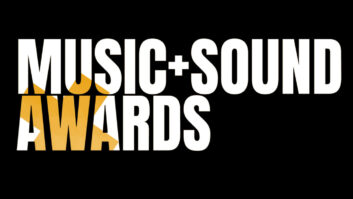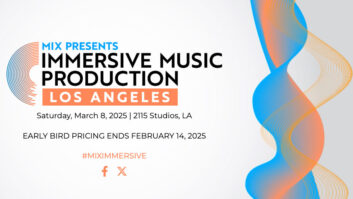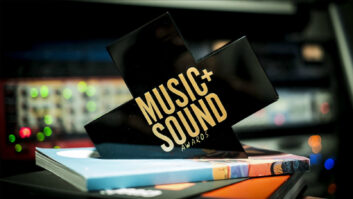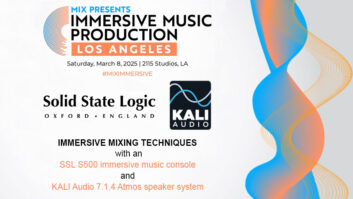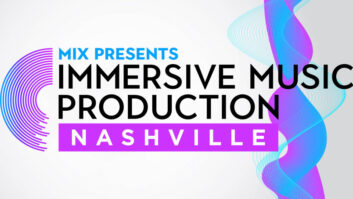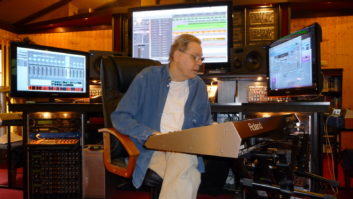 Mikaela Davis’ new album, Delivery, is a beautiful record that highlights not only her skills as a vocalist, pianist and harpist, but also as a writer. Songs like the title track and “A Letter That I’ll Never Send” draw the listener into brilliant, sparse performances—and uncomplicated mixes—that spotlight Davis as a gifted and authentic artist. Pro Sound News spoke to Davis just as she was preparing for a handful of European performance dates and an upcoming headlining tour of the U.S. that begins in Massachusetts on October 10.
Mikaela Davis’ new album, Delivery, is a beautiful record that highlights not only her skills as a vocalist, pianist and harpist, but also as a writer. Songs like the title track and “A Letter That I’ll Never Send” draw the listener into brilliant, sparse performances—and uncomplicated mixes—that spotlight Davis as a gifted and authentic artist. Pro Sound News spoke to Davis just as she was preparing for a handful of European performance dates and an upcoming headlining tour of the U.S. that begins in Massachusetts on October 10.
On Selecting a Producer
I chose John Congleton because I really like that every record he produces sounds totally different, and I thought that was really cool. He’s also worked with some great artists I admire. I was pretty scared going into the studio and had never worked with a big-time producer before. I was nervous that it wasn’t going to be good enough, or that he wasn’t going to like my band. I have fought for my band for years, and there have been times when people I am working with suggest that I use session musicians, and I have always stood my ground and stuck by my band. We were all scared, because the boys didn’t know if John was going to like them, and I didn’t know if I was going to like John.
On Banding Together
I trust my band; they all know what they are doing. We all listen to the same music, and I have been best friends with my drummer for years, since high school. In fact, we grew up around the corner from each other. He co-wrote some of the songs on the record, but even some of those, we didn’t know how they would end up sounding. I think the most surprising change in a song for us was in a tune called “A Letter That I’ll Never Send”—I didn’t even know if there would be drums on it, and it had been written as a folk song. But then John [Congleton] said, “Maybe you should add a fuzz guitar in the chorus and have Alex do a crazy drum roll.” It was all very unexpected, but it works.
Music Etc.: Neko Case, “Hell-On,” by Jacques Sonyieux, April 30, 2018
On the Cool Moment
John was really into finding a cool moment, versus finding the perfect take. We were done tracking bass and drums within four days because it was all live; he would grab one specific take and then move on. I was originally nervous about this because it was going so fast. I had never worked like this before and I thought it might be too sloppy or that the takes might not be enough. Also, when we went to do vocals, I would sing maybe four takes all the way through, and just as I felt that I was getting warmed up, John would say, “OK, we’re done.” He explained to me that the first take is your warm-up take, and then usually the second or third take is the one, because you are not really thinking about it but you are warmed up.

On Growing up with the Harp
I’ve always been in love with the harp, but I started both harp and piano around the same time when I was in elementary school. I thought [the harp] was the coolest instrument out of all of them. My mom said I came home one day and just said, “Hi, mom, I’m going to play the harp.” Eventually I went to college for harp performance and I have been writing primarily on the harp since I was in high school. But I had a writing block about two years ago when I had to start writing for this record, so I decided to write on the piano again, and that’s when I wrote “Delivery” and “In My Groove.” I now write on both instruments equally, but I’ve been writing more and more on piano because a lot of people have pianos—no matter where I go, I can doodle around.
On Keeping It Warm
I always want to make sure the harp sounds warm and not too tinny—that’s something that can happen a lot with this instrument. Also you have to be careful when you are playing chords in the lower frequencies, because every note is ringing out and the harmonics can sound muddy. In the studio, we usually record the harp with a condenser mic near the soundboard, then maybe a mic inside the soundboard in the back. Everyone mics it differently, and it is interesting to see what people’s ideas are. John was using a tiny little mic, putting it inside the back of the soundboard—it looked like a small lavalier mic. Then we would run it through effects, including an Electro Harmonix Memory Man pedal.
Want more stories like this? Subscribe to our newsletter and get it delivered right to your inbox.
On Playing Her Part
I actually ended up playing less than I thought I would. I would be playing through a song, and then John would say, “Why don’t you try just playing a chord here and a chord there,” because there was a lot going on in drums and bass. So we went back and forth on what the harp was going to do. Do we give it a feature in certain places, or pull it back in others just to make the mix a little more even? I think the sparse arrangements on this record go back to me listening to a lot of John Lennon’s Plastic Ono Band right before we went into the studio. Some songs on that album are just piano, bass and drums, and I just love it. John [Congleton] saw how I felt on this and he adapted to it immediately.
Jacques Sonyieux is a devout explorer of recording studios and the artists who occasionally inhabit them. Please send any tips or feedback to Jacques at [email protected].

